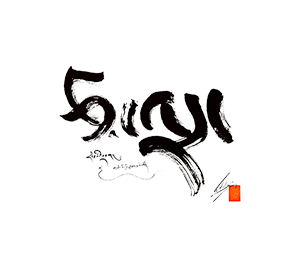Yaroslav Komarovski: On Shakya Chokden's Terminology in Articulating the Buddha-Nature
From Buddha-Nature
< Media
Yaroslav Komarovski: On Shakya Chokden's Terminology in Articulating the Buddha-Nature - 6 of 12
Video
Video
Previous Video
Shakya Chokden's Unique Views on Buddha-Nature by Yaroslav Komarovski: Conversations on Buddha-Nature
Next Video
Sources Mentioned
Śākya Chokden on buddha-nature. This text is a section of a more expansive work on the Ratnagotravibhāga, titled the rgyud bla ma'i rnam bshad sngon med nyi ma sogs chos tshan bzhi.
Maitreya, Asaṅga: Ratnagotravibhāga Mahāyānottaratantraśāstra
The Ratnagotravibhāga, commonly known as the Uttaratantra, or Gyu Lama in Tibetan, is one of the main Indian scriptural sources for buddha-nature theory. It was likely composed during the fifth century, by whom we do not know. Comprised of verses interspersed with prose commentary, it systematizes the buddha-nature teachings that were circulating in multiple sūtras such as the Tathāgatagarbhasūtra, the Mahāparinirvāṇasūtra, and the Śrīmaladevisūtra. The Tibetan tradition attributes the verses to the Bodhisattva Maitreya and the commentary to Asaṅga, and treats the two as separate texts, although this division is not attested to in surviving Indian versions. The Chinese tradition attributes the text to *Sāramati (娑囉末底), but the translation itself does not include the name of the author, and the matter remains unsettled. It was translated into Chinese in the early sixth century by Ratnamati and first translated into Tibetan by Atiśa, although this text is not known to survive. Ngok Loden Sherab translated it a second time based on teachings from the Kashmiri Pandita Sajjana, and theirs remains the standard translation. It has been translated into English several times, and recently into French. See the Ratnagotravibhāgavyākhyā, read more about the Ratnagotravibhāga, or take a look at the most complete English translation in When the Clouds Part by Karl Brunnholzl.
Śākya Chokden: Four Works including Exegesis on the Uttaratantra Entitled the Sun Previously Unseen
Four works including an exegesis on the Uttaratantra by an important Sakya scholar known for taking, at times, controversial stances that challenged the philosophical positions of even his own school. These works, thus, represent a unique view of buddha-nature that is unconfined by the sectarian affiliations that otherwise dominated the Tibetan philosophical landscape.
About the video
| Featuring | Yaroslav Komarovski, Karma Phuntsho |
|---|---|
| Creator | Tsadra Foundation |
| Director | Perman, M. |
| Producer | Tsadra Foundation |
| Event | Shakya Chokden's Unique Views on Buddha-Nature by Yaroslav Komarovski: Conversations on Buddha-Nature (30 October 2021) |
| Related Website | Buddha-Nature |
| Creation Date | 30 October 2021 |
| Citation | Komarovski, Yaroslav. "On Shakya Chokden's Terminology in Articulating the Buddha-Nature." Conversations on Buddha-Nature with Lopen Dr. Karma Phuntsho. Produced by the Tsadra Foundation Research Department, October 30, 2021. Video, 9:56. https://www.youtube.com/watch?v=mXeVspw-zfY. |
